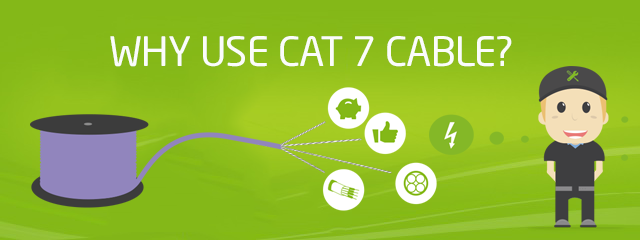
4 Simple Reasons Why Choosing CAT 7 Cable Really Pays Off
What is CAT 7 cable?
A Category 7 cable, more commonly known as a CAT 7 or Cat-7 cable, is used for the cabling infrastructure of Gigabit Ethernet. A CAT 7 cable offers performance of up to 600MHz. Put simply, a CAT 7 cable is what we recommend you use when wiring your smart home!
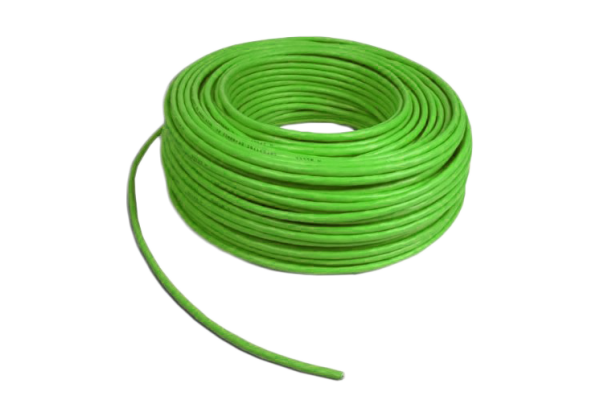
What’s the difference between CAT 5, CAT 6 & CAT 7 cable?
You might be wondering whether it’s worth your while to consider CAT 7 cable. CAT 7 cable differs from preceding Ethernet cable standards including CAT 5 and CAT 6 in several ways, however, one of the greatest advantages of CAT 7 cable is the shielding of its twisted pairs, which significantly improves noise resistance.
CAT 7 cable, whilst being the more expensive option, is also considered the most durable, and has a longer lifespan than CAT 5 and CAT 6, improving its overall return on investment, and is the best choice for wiring with the future in mind.
Does anyone use CAT 7?
Yep! In fact, it’s one of our most popular products. If you’re a Twitter user, just type in the hashtag #LiveInstall and you’ll see the bright green cable popping up in lots of smart home installations.
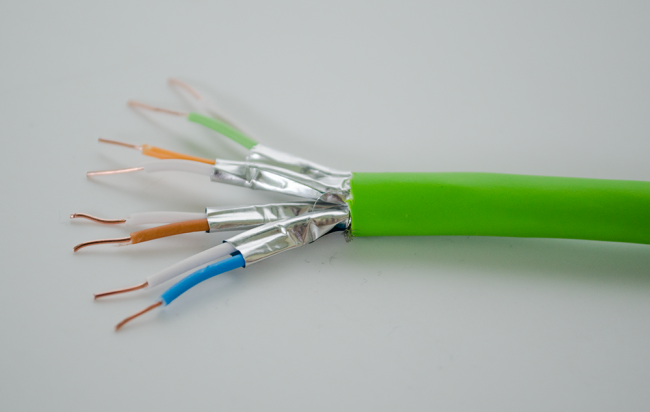
Why do you recommend I use CAT 7 cable?
1.) It Works
We test all of our products using our own CAT 7 cable so we know that by using CAT 7, you’re going to get a reliable Smart Home that works, every time.
2.) One Step Ahead
Life can be unpredictable to say the least, so it makes sense to plan your new home with the future in mind. With a CAT 7 cable, you can create an expandable and flexible cabling system which will save you the expense of re-wiring for new features in the future!
3.) Greater Copper Cross Section
Want more power and less voltage drop? Then opt for CAT 7 cable, as it has a larger copper cross-section than the CAT 5. This also means the individual cores in CAT 7 are easier to work with.
4.) Double Shielding
CAT 7 is much more resilient to interference compared to a CAT 5 cable. Why? CAT 7 has an overall shield as well as individual shielding of every pair.
Isn’t CAT 7 much more expensive?
CAT 7 is going to cost you more, there’s no getting around that at the moment. However, the average price for 250m / 820ft of CAT 6 cable is £157 /$ 195 (taking the average price of the first four Google Shopping results for CAT 6 250m), so in terms of price, there’s around £20 / $25 difference per 250m / 820ft length compared to the CAT 7.
The average house will usually require at least 750 metres / 2500ft of cable, which is three boxes of cable. That works out at a £60 / $ 74 difference between the average CAT 6 price and the CAT 7… not as bad as perhaps as it first appears, especially when you consider the costs involved in the grand scheme of building a house.
Who can I talk to about wiring for my smart home?
If you have a smart project and would like some further information about wiring, features, or if you’d like to come and see a Loxne Smart Home in action, why not request a free smart home consultation? We’ll answer your questions and help you plan the home of your dreams.
Is there a way to cut down on the number of cables I need to pull for my smart home?
Actually yes! Thanks to Loxone Tree, you can reduce the number of cables that need to be run within the home. Loxone Tree is a free-form wiring topology which allows you to connect devices on a room by room basis, rather than wiring individual devices back to a central point like you would in a star wiring topology.
Meet Loxone Tree
Loxone Tree is an ideal choice for your home if you’re looking for a wired smart home solution with minimal cabling and installation time, but don’t want to compromise on flexibility in your wiring topology or communication speed of your devices.
Loxone Tree offers full flexibility for designing the wiring of your home. The Tree Extension has two ‘branches’ and up to 50 Tree enabled devices can be connected to each branch, allowing you to create a free-form wiring structure that’s suited to the size of your home and tailored to your needs.
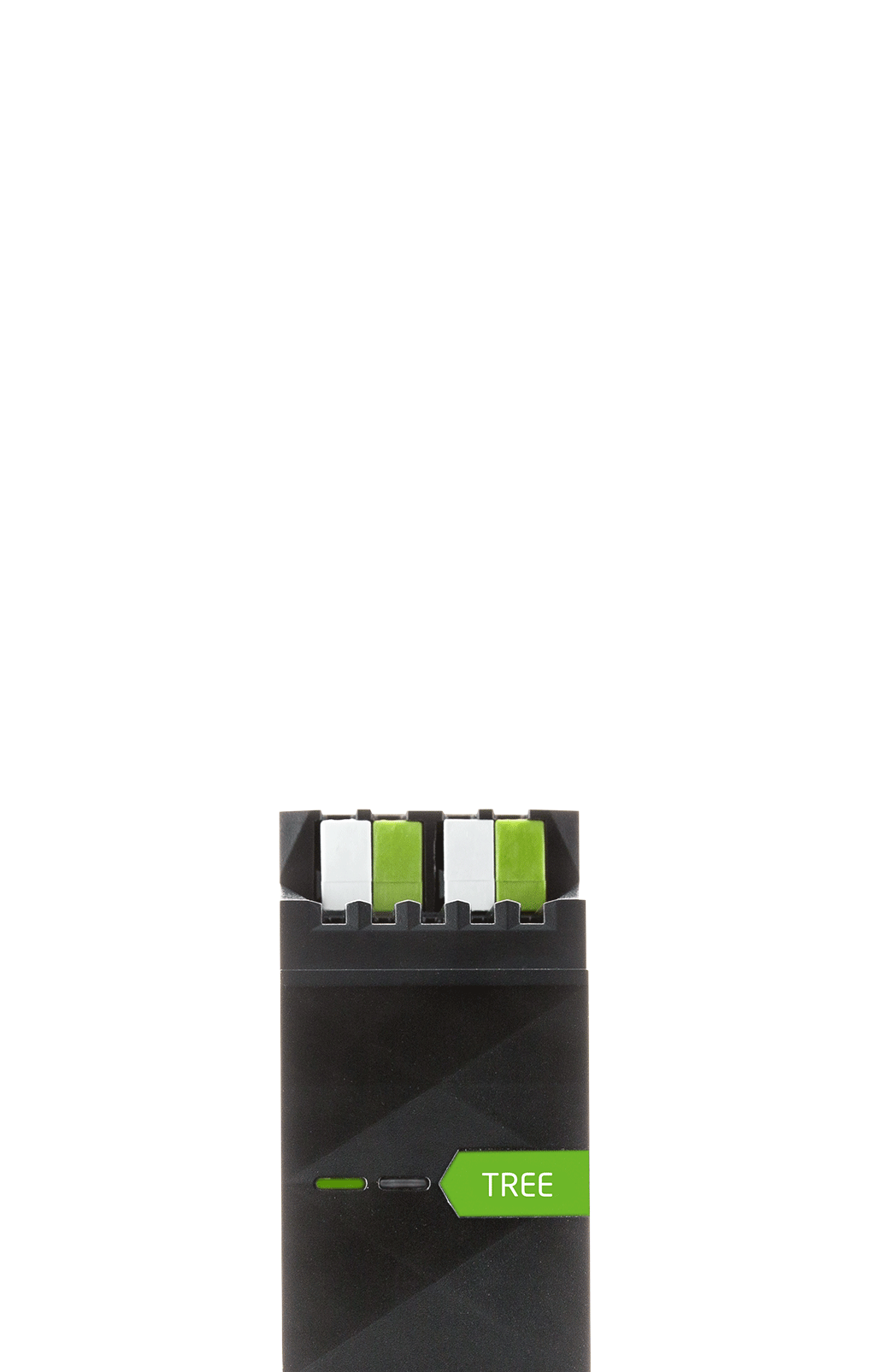
Wiring with CAT7 Cable
The wiring in your home is akin to the nervous system in a human body; without it, your smart home system can neither sense nor act.
Whilst nature has had millennia to perfect the human nervous system, home automation has only been around for a few decades. This means that if you’re going to invest in this technology for your home, you need to be sure that you’re planning ahead.
The technology of today moves at lightning speed, so there’s a very good chance that your lifestyle at home will too. Your wiring infrastructure is the backbone of your home, and by extension, your smart home system. Whilst it’s easy to replace devices such as motion sensors or switches, having to open up walls to pull extra cables is much more costly and inconvenient.
If you’re looking for an introduction to wiring for a Loxone Smart Home, hit the button below for more information.
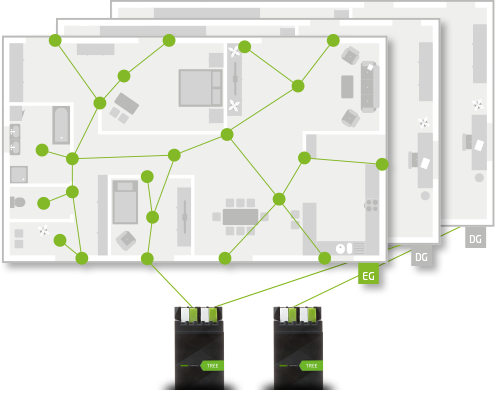
Become a Loxone installer!
Loxone offers an unparalleled opportunity for companies that are active in the smart home industry to grow their business. We offer dedicated training courses, free technical support, customer demonstration facilities, networking and education events and much more.
Whether you’re an electrician, manufacturer of prefabricated houses, architect, M&E designer or solar specialist; get in touch to find out how you can benefit from a strong collaboration with Loxone. Click the button below to discover the advantages of joining forces with Loxone.

